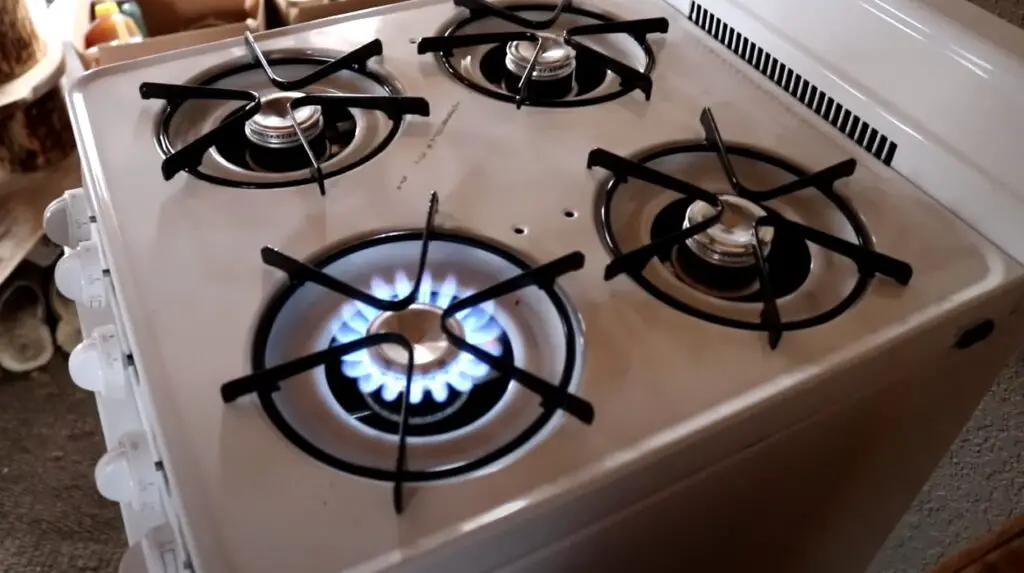
 Save Upto $850 ›
Save Upto $850 ›
You can use gas stove on propane however, there would be some complications which need to be acknowledged here and some instruction that are required to be adhered.
It is pertinent to mention here that not all types of gas stoves can be converted from natural gas to propane because the natural gas is kept at lower pressure and therefore, some equipments, even with changes, can’t withstand the greater pressure of propane.
If you are intending to use your gas stove on propane then you may find this guide helpful! Though both gases are natural resources. However, there is still a risky assumption in order to utilizing gas stove on propane.
Even if it is possible for you to utilize your gas stove on propane, it is not highly recommended and by the time of you reaching the conclusion of this article will understand easily why we consider it as a bad idea.
The primitive thing here is to understand the operationalization of both. Hence you should know the difference between propane and natural gas.
Natural gas is a fossil fuel with high methane levels. It necessitates a larger air-to-fuel volume ratio than propane. Orifices with wider holes are used in natural gas stoves to allow more air to go through and allow for optimum burning.
Propane, on the other hand, is a byproduct of the distillation of natural gas and crude oil. It is also known as Liquefied Petroleum (LP). Propane is heavier than natural gas and, when compressed, condenses into a liquid.
Natural gas may be delivered via pipelines, whereas propane is delivered using high-pressure cylinders that maintain the high density and pressure.
Propane has a greater BTU rating than natural gas. Each unit of propane has double the energy of a unit of natural gas. As a result, for the same amount of heating, you’ll need twice than much natural gas as propane.
Well, in consideration of the differences stated above, both gases work differently and thus both will have different kind of impact on your gas stove; making it difficult for you to operate your gas stove smoothly.
However, there are some key points that are highly noted by many when they conducted this experiment and we have tried to highlight them for you:
Running propane through an aperture meant for natural gas will result in an excessively big flame and soot. The flame will get larger, causing damage and maybe an explosion.
This is due to the fact that the orifice jet intended for natural gas is bigger than the one built for propane. Unreacted propane results in the formation of carbonaceous soot. When propane is partially burned, it emits deadly carbon monoxide gas and soot.
Another important consideration is the density of the fuel. Because propane has a larger density, it needs more pressure to completely burn the fuel. Incorrect fuel/air ratio results in irregular illumination and may cause harm.
Because of the reduced pressure, you may have difficulties igniting and maintaining the flame. If it ignites, you may observe bigger flames that are unstable and difficult to control, turn orange, and leave soot on the cookware.
When utilizing bigger orifices designed for natural gas, using propane on a natural gas stove may result in carbon monoxide poisoning owing to incomplete gas combustion, excessive pressure, and gas leakage. Carbon monoxide is a colorless, odorless gas that, when breathed, causes poisoning.

Even after considering all of these factors, if you are still stubborn to run your gas stove on propane anyways. You will be needing a conversion kit in this regard, then.
The contemporary conversion kits can be found in the stores of your stove manufacturers’ easily. Not only this, there are some type of gas stoves / ranges that come different kind of conversion kits saving you time, effort and money.
Moreover, if you gas stove doesn’t contain any conversion kit within it or you also cannot find the separate conversion kit on the concerned store / online then it is an indicator that your gas range isn’t convertible and you should try to contact your range’s manufacturers’ helpline before conducting any experiment.
Below is mentioned the procedure for converting gas stove in propane
Turn off the electricity to the range at the breaker panel or fuse box. Turn off the gas by closing the gas shut-off valve.
Now, find out the type of LP orifice that goes to the range burners and screw that tightly onto the burner orifice holders.
Place the warmer drawer on the rails and close it.
Turn on the electrical breakers and open the gas supply valve.
Inspect all surface burners for correct flames.
Conversion Professionals will often price between $150 and $300. They may charge more or less, but most will charge between that range.
Before using a stove, always read and follow the manufacturer’s instructions.
Now that you are here, at the bottom, and it is you to decide whether you want to be abstained from utilizing your gas stove on propane or go for it.
In our humble opinion, we are of the view that you should drop the subject because it is not a very good idea.
Further in the same context, if there is no other option left for you should ask for the experts or get the help of your manufacturers’ support.
Never try to do it yourself! If you are persistent take strict precautionary measures and comply with the instructions stated above.